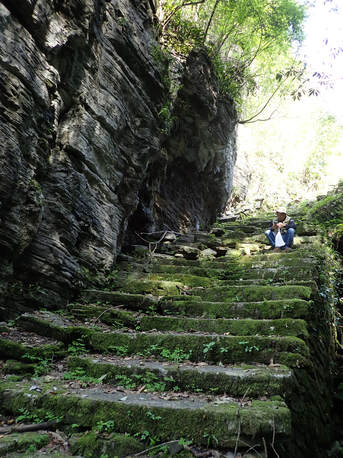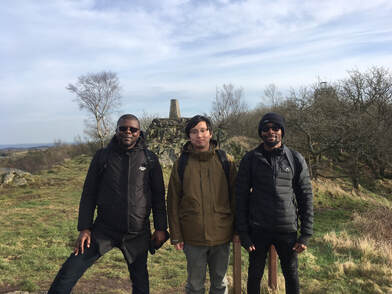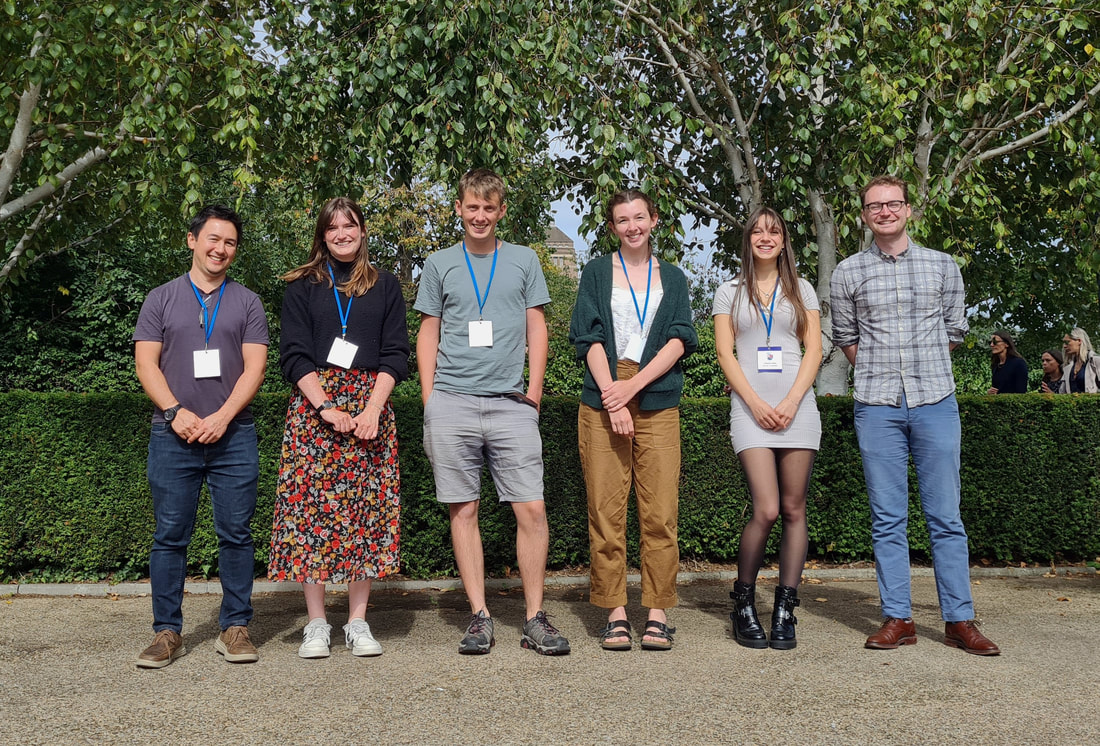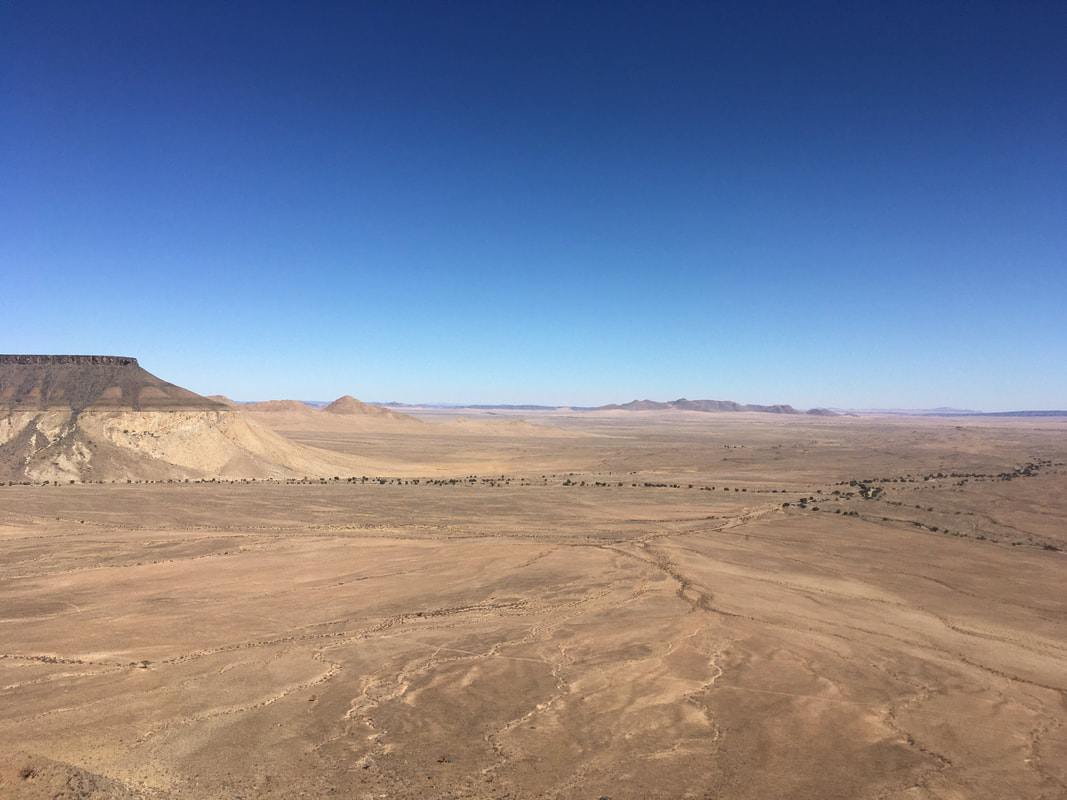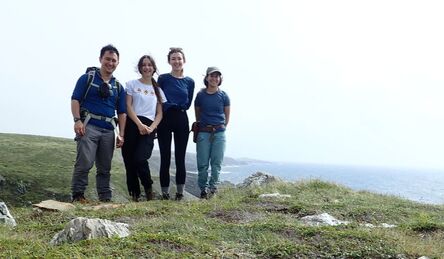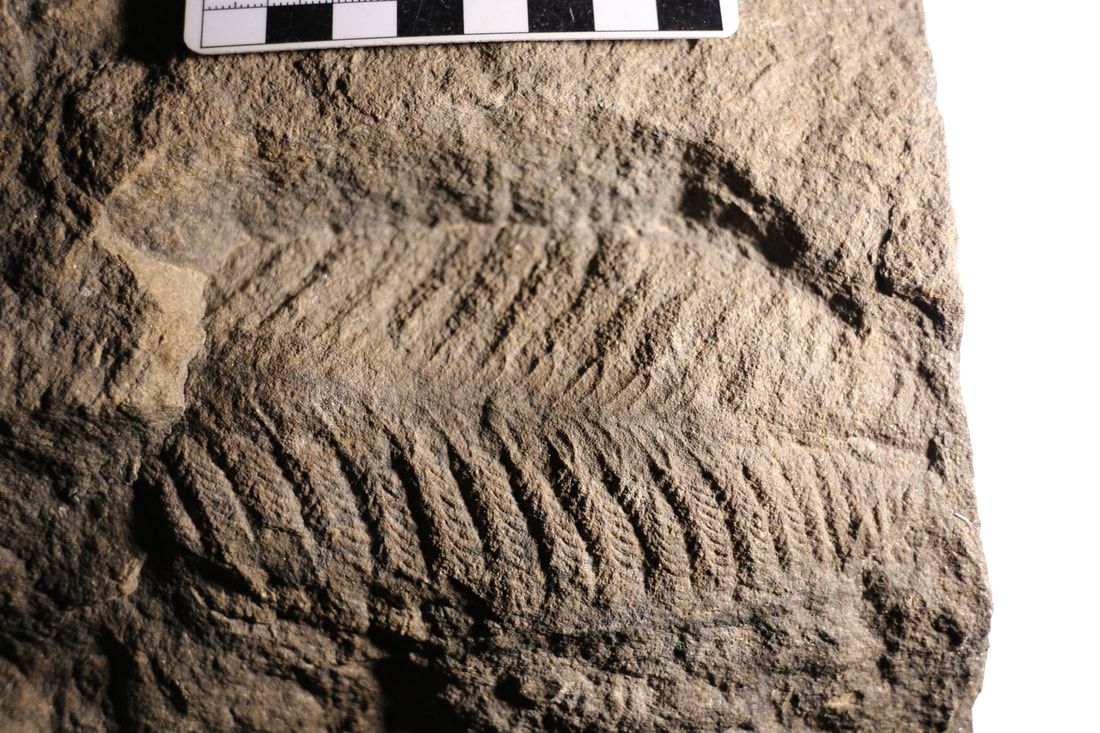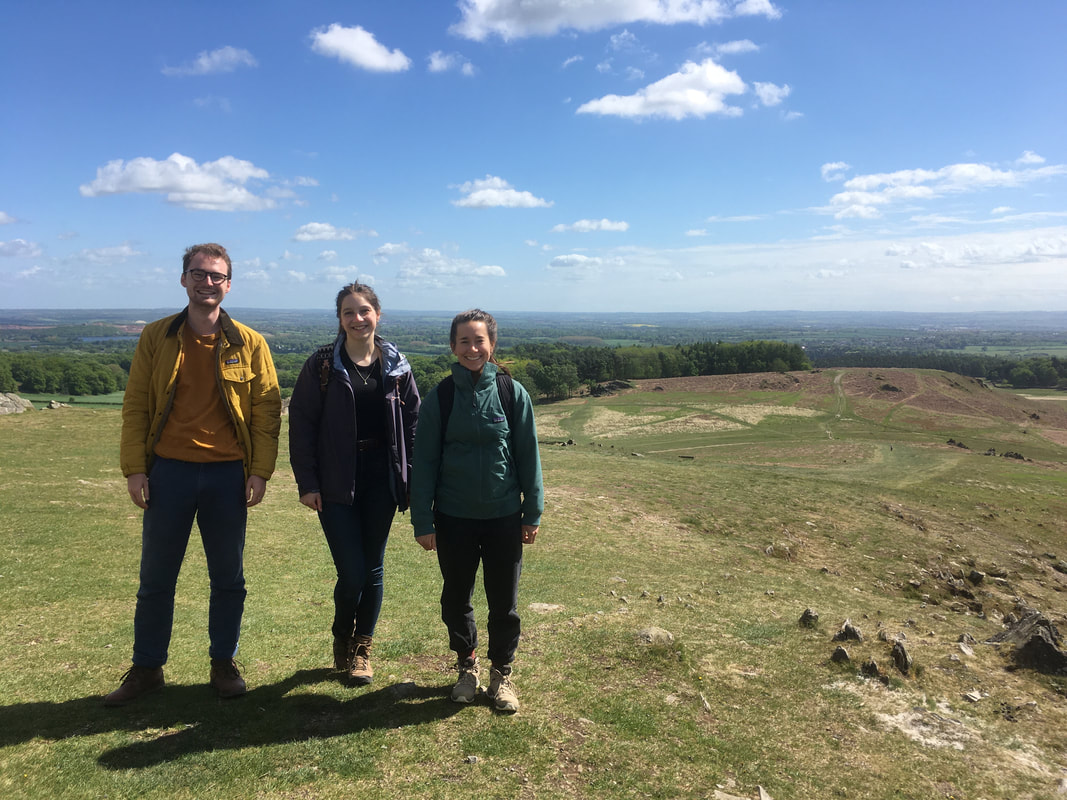latest news
FIELDWORK IN CHINA! (APRIL 2024)
|
Brennan, Xiaopeng and Alex spent two weeks in April visiting and collaborating with the research group of Prof. Xunlai Yuan from the Nanjing Institute of Geology and Palaeontology. Generously hosted by Prof. Zhe Chen, Prof. Ke Pang, and PhD students Yarong Liu and Hanzhi Qu, we visited sections of the Dengying Formation in Hubei Province to determine the sedimentological context of the late Ediacaran Shibantan biota. Excellent weather, incredible food, beautiful mountain scenery and our fantastic hosts ensured that we had an extremely enjoyable and successful trip! We are honoured and privileged to have been offered the opportunity to see these important global sites.
|
A new method for stabiliZING TAPHONOMIC EXPERIMENTS (MARCH 2024)
Researchers frequently conduct laboratory decay experiments to better understand the mineralogical processes involved in fossil preservation. Such experiments typically observe the experimental products either by not covering the decaying carcasses with sediment (which is often taphonomically unrealistic), or by introducing barriers to the experimental set-up (e.g. plastic sheeting) to enable separation of different sediment layers once the experiment is complete. PhD student Phil Vixseboxse has designed an experimental protocol that permits us to stabilize aqueous sediment-based decay experiments in a resin, minimizing disruption to the carcass and permitting the resulting blocks to be studied via techniques comparable to those we would use on geological samples (e.g. thin sectioning). This technique has a range of potential uses within taphonomic research.
Vixseboxse, P.B., McMahon, S.H. and Liu, A.G. (2024) Taphonomic experiments fixed and conserved with Paraloid B72 resin via solvent replacement. Lethaia, 57(1), 1–11. doi: 10.18261/let.57.1.1
Vixseboxse, P.B., McMahon, S.H. and Liu, A.G. (2024) Taphonomic experiments fixed and conserved with Paraloid B72 resin via solvent replacement. Lethaia, 57(1), 1–11. doi: 10.18261/let.57.1.1
HOSTING COLLABORATORS FROM THE UNIVERSITY OF NAMIBIA! (January 2024)
|
In early January we were honoured to host Dr Collen-Issia Uahengo and MSc student Elkan Utoni from the University of Namibia for a two-week visit. In addition to collaborating on Elkan's MSc project research, we visited Ediacaran fossil sites in Charnwood Forest, and spent time discussing future collaborations. Collen managed to visit colleagues at the University of Edinburgh, and he and Elkan returned to UNAM with a variety of geological textbooks donated from the Cambridge Department of Earth Sciences library for the UNAM Department of Geology library.
|
CHALLENGING THE OLDEST EVIDENCE FOR BIOTURBATION (december 2023)
December saw the long-awaited publication of Christos Psarras' MSc project, which he undertook at the University of Bristol. Christos applied CT scanning, optical microscopy and SEM analysis to fossil material from Siberia that had previously been claimed to represent the oldest evidence for bioturbation in the fossil record (Rogov et al., 2012). Alex was involved a previous paper challenging that interpretation (Brasier et al., 2013), instead proposing a body-fossil explanation for the specimens. In collaboration with authors Dima Grazhdankin and Vladimir Rogov from the original paper, Christos led a team to gather additional morphological and petrological data to determine between these trace- and body-fossil interpretations. The resulting study addresses both interpretations when considering the new data, and concludes that the material most likely reflects the body fossils of originally tubular organisms.
Psarras, C., Donoghue, P.C.J., Garwood, R.J., Grazhdankin, D.V., Parry, L.A., Rogov, V.I. and Liu, A.G. (2023) Three-dimensional reconstruction, taphonomic and petrological data suggest that the oldest record of bioturbation is a body fossil coquina. Papers in Palaeontology, e1531, doi: 10.1002/spp2.1531
Psarras, C., Donoghue, P.C.J., Garwood, R.J., Grazhdankin, D.V., Parry, L.A., Rogov, V.I. and Liu, A.G. (2023) Three-dimensional reconstruction, taphonomic and petrological data suggest that the oldest record of bioturbation is a body fossil coquina. Papers in Palaeontology, e1531, doi: 10.1002/spp2.1531
PalAss 2023, new arrivals, and a busy summer! (September 2023)
|
September saw us host the 67th Annual Meeting of the Palaeontological Association in Cambridge, which saw over 330 palaeontologists descend on the city. Much of the summer was spent preparing for the meeting, with all members of the group called upon at some point to help with poster board construction, student volunteer co-ordination, and packing of delegate packs: a very useful group-bonding exercise! Congratulations to Cat, Brennan and Katie for their poster presentations at PalAss, and particularly to Phil, whose talk on the potential influence of microbial collagenase proliferation on the fossil record won him the President's Prize for best student talk!
Other notable events include the arrival of Dr Xiaopeng Wang from NIGPAS (Nanjing, China), who joins the group for a two-year postdoc, and the return of Katie from her summer world-tour of fieldwork and conferences in Fiji, Japan, Australia and Canada. |
PLENTY OF FIELDWORK (MAY 2023)
|
Due to the group being heavily involved in the organisation of the 2023 Palaeontological Association Annual Meeting, fieldwork for PhD projects and the Leverhulme study had to take place earlier in the year than usual. In April, Alex, Brennan, Cat and Sean McMahon (Edinburgh) travelled to Namibia for 3 weeks to conduct collaborative fieldwork in the late Ediacaran Nama Group of Namibia with colleagues at the Geological Survey of Namibia, and UNAM. This included starting a partnership with UNAM, funded by the Cambridge-Africa ALBORADA research fund, to study the palaeoecology of a newly discovered fossil site, involving UNAM MSc student Elkan Utoni. Thank you to all the local landowners who gave us permission to work on their land.
Meanwhile in May, Will, Brennan and Phil travelled to South Australia to conduct research into the sedimentology, stratigraphy and taphonomy of the Ediacara Member. Comparative study of these two globally important localities will help us to determine whether environmental factors, as opposed to evolutionary changes, were responsible for the very different fossil assemblages described from Namibia and South Australia. |
GUANGWEIA: A NEW FRONDOSE FOSSIL FROM THE CAMBRIAN GUANSHAN BIOTA (february 2023)
Back in 2019, Alex visited Nanjing in China and was kindly invited by Prof. Shixue Hu, Prof. Maoyan Zhu, and Dr. Fangchen Zhao to collaborate on the description of an Ediacaran-like frondose form from the Cambrian Guanshan biota. Despite the challenges of remote communication during the pandemic, the paper describing this new form progressed to publication in the Journal of the Geological Society this month. Guangweia cheni invites comparison with Ediacaran fronds, but exhibits a variety of different anatomical features, including a lack of clear fine-scale branching and a wrinkled surface integument. It therefore appears to be an example of convergent evolution on a frondose body plan, offering us the opportunity to discuss whether any Ediacaran taxa or lineages "survived" into the Cambrian.
Hu, S., Zhao, F., Liu, A.G. and Zhu, M. (2023). A new Cambrian frondose organism: "Ediacaran survivor" or convergent evolution? Journal of the Geological Society, 180, doi: 10.1144/jgs2022-088
Hu, S., Zhao, F., Liu, A.G. and Zhu, M. (2023). A new Cambrian frondose organism: "Ediacaran survivor" or convergent evolution? Journal of the Geological Society, 180, doi: 10.1144/jgs2022-088
CONFERENCE PRESENTATIONS and funding success (dECEMBER 2022)
November and December have seen plenty of activity, with Phil and Katie traveling to Thailand for the IPC6 conference, while Brennan and Cat presented talks at the annual BSRG meeting at the National Oceanography Centre in Southampton. The feedback obtained and connections made will feed into several publications that we intend to submit next year. Preparations are also beginning for fieldwork in 2023, although fitting this around the 67th Annual Meeting of the Palaeontological Association, which we will be hosting in Cambridge in September 2023, is already proving a challenge! We have also had some success with collaborative grant applications: University of Leicester colleague Professor Mark Williams has secured a Leverhulme Research Project Grant to explore "Earth system dynamics at the dawn of the animal-rich biosphere", for which we will be contributing Ediacaran palaeontological and environmental data. Meanwhile, Brennan and Alex have obtained funding from the Cambridge-Africa ALBORADA fund to return to Namibia in 2023, and to collaborate with researchers at the University of Namibia, led by Professor Collen-Issia Uahengo. We're excited to get started!
THESIS COMPLETION! (OCTOBER 2022)
Congratulations to Ben Tindal, who passed his PhD viva in October 2022! Ben's project has explored the geological constraints on Neoproterozoic glacial episodes, and amongst other things includes a critical review of the sedimentological evidence for all pre-Pliocene glacial deposits in the U.K. He has secured a job with Natural England, and we all wish him luck as he starts his new position.
NEWFOUNDLAND FIELDWORK (September 2022)
|
Cat, Katie, Brennan and Alex have just returned from four weeks of fieldwork in Newfoundland, Canada. We managed to avoid hurricanes Euan and Fiona, and gathered plenty of data for Cat and Katie's projects. In addition to our work on the late Ediacaran shallow marine stratigraphic sections on the island, we were also able to visit the classic fossil sites in the Mistaken Point Ecological Reserve UNESCO World Heritage Site, and the Discovery Geopark on the Bonavista Peninsula, while also catching up with collaborators and friends old and new.
|
NAMIBIAN FIELDWORK (JUNE 2022)
|
Will, Brennan and Alex recently completed four weeks of fieldwork on the sedimentology and depositional environments of the late Ediacaran Nama Group, Namibia. In addition to gathering data that will enable us to conduct full facies analyses of the siliclastic units containing fossils of soft-bodied organisms throughout the Nama Group, we also discovered new fossil specimens (including novel taxa), logged new sections, and initiated collaborations with the Geological Survey of Namibia. Brennan also found one of the most beautiful Rangea specimens you will ever see (now housed in the Museum of the Geological Survey of Namibia, Windhoek, specimen GSM F1726)!
|
WELCOME TO BRENNAN O'CONNELL! (april 2022)
Postdoctoral researcher Dr. Brennan O'Connell has arrived to start her 3-year position examining the sedimentological context for late Ediacaran macrofossil assemblages, following the completion of her PhD at the University of Melbourne. Her first task will be to prepare for our first project field campaign, to the Nama Group of Namibia in late May 2022. Welcome to the group Brennan!
|
Paper publications and conference PRESENTATIONS (December 2021)
Over the past term, there have been several successes for lab group members. Katie Delahooke presented her research on Ediacaran "conga lines" at the Palaeontological Association Annual Meeting in December. Meanwhile Phil Vixseboxse saw his first first-author publication published in the journal Frontiers in Earth Sciences. That paper stems from work he completed prior to joining the lab, investigating the causes of observed fossil orientations of Ediacaran taxa in Newfoundland, Canada. Congratulations Katie and Phil!
Vixseboxse, P.B., Kenchington, C.G., Dunn, F.S. and Mitchell, E.G. (2021) Orientations of Mistaken Point fronds indicate morphology impacted ability to survive turbulance. Frontiers in Earth Sciences, 9, 762824. doi: 10.3389/feart.2021.762824
Vixseboxse, P.B., Kenchington, C.G., Dunn, F.S. and Mitchell, E.G. (2021) Orientations of Mistaken Point fronds indicate morphology impacted ability to survive turbulance. Frontiers in Earth Sciences, 9, 762824. doi: 10.3389/feart.2021.762824
welcome to our new lab members! (october 2021)
Our Leverhulme Research Project Grant, titled: "Establishing the environmental context for Earth’s first ‘mass extinction’", has finally started! This collaborative project between Alex Liu, Sean McMahon (Edinburgh), William McMahon (Cambridge), and Dima Grazhdankin (Novosibirsk) will investigate sedimentary successions in Russia, Namibia and Canada to evaluate the depositional environments in which Ediacaran macrofossils occur. Our two PhD students, Phil Vixseboxse and Catherine Boddy, arrived to start their projects this week!
MAPPING THE PALAEOLATITUDINAL DISTRIBUTION OF THE EDIACARAN MACROBIOTA (August 2021)
A paper arising from Catherine Boddy's undergraduate Masters project has been published in the Journal of the Geological Society. In collaboration with Dr Emily Mitchell and Dr Andrew Merdith (Leeds), Cat collated data on the geographical distribution of all documented Ediacaran macrofossils, and plotted their occurrences through time on leading palaeogeographic reconstructions for the late Ediacaran. She then used statistical analyses to test the strength of observed trends, noting that although the Ediacaran macrobiota as a whole have a broad global spatial distribution, those taxa considered the leading candidates for bilaterian animals are found only at low palaeolatitudes when they first appear in the fossil record after 560 million years ago.
Boddy, C.E., Mitchell, E.G., Merdith, A. and Liu, A.G. (2021) Palaeolatitudinal distribution of the Ediacaran macrobiota.
Journal of the Geological Society, doi: 10/1144/jgs2021-030
Boddy, C.E., Mitchell, E.G., Merdith, A. and Liu, A.G. (2021) Palaeolatitudinal distribution of the Ediacaran macrobiota.
Journal of the Geological Society, doi: 10/1144/jgs2021-030
Resolving the phylogenetic position of charnia masoni (july 2021)
A study led by Dr Frankie Dunn, and involving collaborators from Novosibirsk, Bristol, and the British Geological Survey, assesses the developmental biology of the Ediacaran rangeomorph Charnia masoni. Published in Science Advances, the paper recognises sympodial growth within Charnia, discusses homology between Ediacaran frondose taxa, and combines morphological and developmental data to place Charnia within a phylogenetic framework, identifying it (and by implication all rangeomorphs) as a stem-eumetazoan.
Dunn, F.S., Liu, A.G. et al. (2021) The developmental biology of Charnia and the eumetazoan affinity of Ediacaran rangeomorphs.
Science Advances, 7, eabe0291. doi: 10.1126/sciadv.abe0291
Dunn, F.S., Liu, A.G. et al. (2021) The developmental biology of Charnia and the eumetazoan affinity of Ediacaran rangeomorphs.
Science Advances, 7, eabe0291. doi: 10.1126/sciadv.abe0291
pre-gaskiers ediacaran macrofossils (april 2021)
During fieldwork on the Bonavista Peninsula of Newfoundland in 2019, Alex Liu and Ben Tindal found specimens of the late Ediacaran taxon Palaeopascichnus in siltstones directly beneath the Trinity diamictite - a glacial unit that is correlative to the Gaskiers Formation. These fossils are the oldest Ediacara-type macrofossils to be reported from Newfoundland.
Liu, A.G. and Tindal, B.H. (2021) Ediacaran macrofossils prior to the ~580 Ma Gaskiers glaciation in Newfoundland, Canada.
Lethaia, 54, 260–270. doi: 10.1111/let.12401
Liu, A.G. and Tindal, B.H. (2021) Ediacaran macrofossils prior to the ~580 Ma Gaskiers glaciation in Newfoundland, Canada.
Lethaia, 54, 260–270. doi: 10.1111/let.12401
WWW.EDIACARAN.ORG OUTREACH WEBSITE
The group maintains a website, www.Ediacaran.org, that is dedicated to promoting and sharing information on Ediacaran fossils and research. The website was founded in 2012, and is undergoing a major content overhaul.

